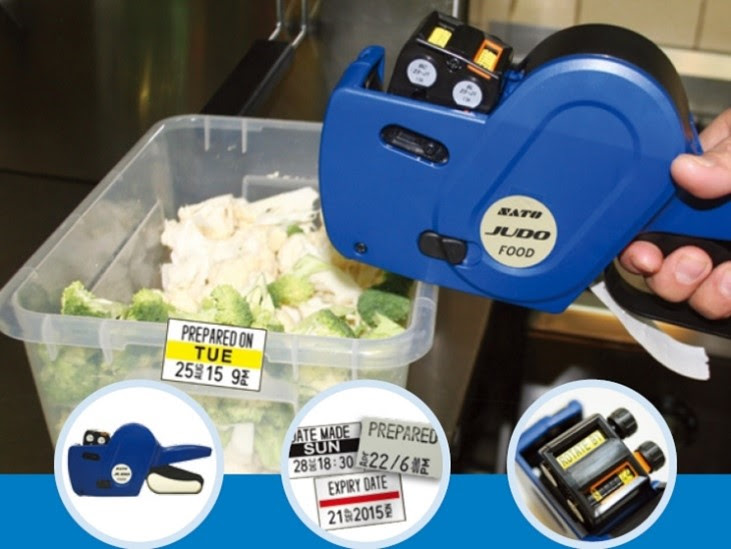
60th anniversary of the SATO Handheld Labeler
SATO, a global pioneer in auto-ID and labeling solutions, marks the 60th consecutive year of sale of its longest-running product—the hand labeler.
The hand labeler—also referred to as a price gun—was developed by SATO founder Yo Sato, in 1962. The idea was inspired by his observation of price tagging on the retail floor. At the time, pieces of paper with prices written on them were cut and glued to individual products. He wondered if there was a way to make the process easier. At the time, Japan was in a period of economic growth, and an increasing number of products came to be available on retail shelves.
Seeking to mechanize the pricing process, Yo’s inspiration came when he saw a sticker in a worker’s breast pocket. He realized that if the backing paper were folded, the sticker would come off cleanly. This idea was applied to the prototype.
Since the original product launch in 1962, businesses around the world have been using SATO hand labelers, and the lineup has expanded to 6 product brands and 41 models1. SATO has made a number of improvements to the design over the years, including the adoption of a lightweight, drop-resistant chassis and a body that makes it easier to set the label reels.
We have also expanded our lineup of genuine SATO labels, including label substrates, glues, and ink rollers, to allow customers to choose the product best suited to their application and usage environment.
The number of situations in which hand labelers are used has also expanded. Beyond price tagging in stores, they are used in food service for food expiry management, in hospitals for displaying administrative codes and expiration dates, and in transport & logistics for lot numbers.
Tagging is the fundamental mechanics of attaching information to things to solve on-site problems. The invention of the hand labeler, used to attach prices to products in stores, was the starting point for SATO’s tagging business, our core expertise that lives on to this day.

How prices were labeled before the invention of the hand labeler (in Japan)


 1. Includes custom-made products for individual customers.
1. Includes custom-made products for individual customers.
2. HACCP (Hazard Analysis and Critical Control Point), an internationally recommended food sanitation management method, in principle. Under HACCP, food manufacturers are required to predict in advance hazardous factors in the food manufacturing process, identify critical control points to prevent hazards, and continuously record and manage these points.
“JUDO” is a trademark or registered trademark of SATO Holdings Corporation in Japan and other countries.









